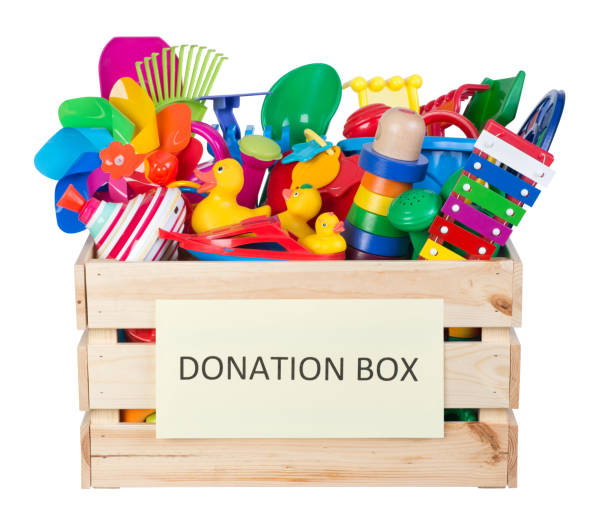Understanding Donation Receipts: A Comprehensive Guide
In the realm of charitable giving, donation receipts play a crucial role in both acknowledging the generosity of donors and ensuring compliance with legal and tax regulations. This guide aims to explore the significance of donation receipts, their various forms, the legal requirements surrounding them, and best practices for issuing and managing these important documents.
The Purpose of Donation Receipts
Donation receipts serve several essential purposes. At their core, these documents are meant to provide donors with formal acknowledgment of their contributions. For donors, a receipt is not only a symbol of the charity's appreciation but also a critical document for tax purposes. It serves as proof that a donation was made and is often required for claiming tax deductions.
For charities and nonprofit organizations, issuing donation receipts is a matter of accountability and transparency. It ensures that all financial contributions are documented and can be tracked accurately. This practice fosters trust between donors and the organization, reinforcing the credibility and reliability of the nonprofit sector.
Types of Donation Receipts
Donation receipts can vary in form and content, depending on the nature of the donation and the requirements of the jurisdiction in which the charity operates. Common types include written receipts, electronic receipts, and in-kind donation receipts.
Written receipts are traditional paper documents provided to donors immediately after a contribution is made. They typically include the charity’s name, the donor’s name, the date of the donation, the amount donated, and a statement of the non-profit’s tax-exempt status. These receipts are often printed on official letterhead to add a level of formality and authenticity.
Electronic receipts are becoming increasingly popular due to the convenience they offer. These digital documents are sent via email or through an organization’s online donation platform. While they serve the same purpose as written receipts, they also include features like hyperlinks to the charity’s website or digital signatures, enhancing their functionality and ease of distribution.
In-kind donation receipts are used for non-monetary contributions, such as goods or services. These receipts detail the nature and value of the donated items or services. Since valuing in-kind donations can be complex, it is crucial for the charity to provide a fair and accurate assessment while reminding donors that they are responsible for determining the value of their donations for tax purposes.
Legal Requirements for Donation Receipts
Legal requirements for donation receipts can vary by country and even by state or province. However, there are several common elements that most jurisdictions require. In the United States, for instance, the Internal Revenue Service (IRS) mandates that charities provide a written acknowledgment for donations of $250 or more if the donor intends to claim a tax deduction. This acknowledgment must include the name of the charity, the amount of cash donated, and a description of any non-cash contributions. Additionally, it must state whether the charity provided any goods or services in exchange for the donation and, if so, a description and good faith estimate of the value of those goods or services.
In Canada, the Canada Revenue Agency (CRA) requires charities to issue receipts for all donations that are eligible for a tax credit. Receipts must include the charity’s registration number, the donor’s name and address, the date and amount of the donation, and the signature of an authorized person. Charities must also ensure that their receipts comply with the specific format and content requirements set out by the CRA.
Other countries have their own regulations and guidelines for donation receipts. For example, the UK Charity Commission stipulates that charities must issue receipts for donations of £50 or more if the donor requests one. The receipt should include details such as the charity’s name, the amount donated, and a statement confirming that no goods or services were provided in return.
Best Practices for Issuing Donation Receipts
To ensure compliance and maintain donor trust, charities should adhere to best practices when issuing donation receipts. Firstly, it is essential to issue receipts promptly. Immediate acknowledgment of donations helps reinforce the donor’s commitment and appreciation for their support. Whether issuing written or electronic receipts, timely delivery is crucial for maintaining donor satisfaction.
Secondly, accuracy in receipt issuance cannot be overstated. Charities must ensure that all information on the receipt is correct and complete. This includes verifying the donor’s name, the donation amount, and the date. Any errors or omissions can lead to complications for both the donor and the charity, potentially affecting tax deductions and record-keeping.
Another important aspect is consistency in receipt formatting and content. Charities should develop a standardized template for their receipts to ensure that all necessary information is included and presented clearly. Consistent formatting also helps create a professional image and enhances the overall credibility of the organization.
Charities should also maintain thorough records of all issued receipts. This practice is crucial for internal auditing and financial reporting. Keeping detailed records allows charities to track donations accurately and resolve any discrepancies that may arise. It also facilitates compliance with regulatory requirements and prepares the organization for any potential audits.
Furthermore, charities should educate their staff and volunteers about the importance of donation receipts and the correct procedures for issuing them. Providing training ensures that everyone involved in the donation process understands their responsibilities and can handle receipts with care and accuracy.
Challenges and Solutions in Donation Receipt Management
Managing donation receipts can present several challenges, particularly for larger organizations with high volumes of donations. One common challenge is ensuring that all donations are properly documented and acknowledged in a timely manner. To address this, charities can implement automated systems for receipt generation and distribution. These systems can streamline the process, reduce errors, and ensure prompt issuance of receipts.
Another challenge is handling in-kind donations, which can be more complex to value and document. Charities should develop clear guidelines for assessing the value of in-kind donations and provide donors with accurate and transparent information. Collaboration with experts or appraisers may be necessary for high-value items to ensure fair and accurate valuation.
Charities may also encounter issues with donor information, such as incomplete or incorrect contact details. To mitigate this, organizations should have procedures in place for verifying donor information at the time of the donation and offer multiple channels for donors to update their details.
The Impact of Donation Receipts on Donor Relations
Effective management of donation receipts has a significant impact on donor relations. By providing prompt, accurate, and professional acknowledgment of contributions, charities can build strong relationships with their donors. This, in turn, can lead to increased donor retention and higher levels of support for the organization’s mission.
Positive donor experiences are often reflected in continued support and repeat donations. When donors feel valued and appreciated, they are more likely to contribute again and recommend the charity to others. Therefore, investing in efficient and effective receipt management systems is not only a matter of compliance but also a strategic approach to fostering long-term donor relationships.
Conclusion
Donation receipts are a fundamental aspect of the charitable giving process, serving both practical and symbolic purposes. They provide essential documentation for tax purposes, ensure transparency and accountability, and contribute to positive donor relations. By understanding the various types of donation receipts, legal requirements, best practices, and potential challenges, charities can effectively manage this critical component of their operations. Ultimately, a well-managed donation receipt system enhances the overall efficiency and credibility of an organization, reinforcing its commitment to its mission and its supporters.
In the realm of charitable giving, donation receipts play a crucial role in both acknowledging the generosity of donors and ensuring compliance with legal and tax regulations. This guide aims to explore the significance of donation receipts, their various forms, the legal requirements surrounding them, and best practices for issuing and managing these important documents.
The Purpose of Donation Receipts
Donation receipts serve several essential purposes. At their core, these documents are meant to provide donors with formal acknowledgment of their contributions. For donors, a receipt is not only a symbol of the charity's appreciation but also a critical document for tax purposes. It serves as proof that a donation was made and is often required for claiming tax deductions.
For charities and nonprofit organizations, issuing donation receipts is a matter of accountability and transparency. It ensures that all financial contributions are documented and can be tracked accurately. This practice fosters trust between donors and the organization, reinforcing the credibility and reliability of the nonprofit sector.
Types of Donation Receipts
Donation receipts can vary in form and content, depending on the nature of the donation and the requirements of the jurisdiction in which the charity operates. Common types include written receipts, electronic receipts, and in-kind donation receipts.
Written receipts are traditional paper documents provided to donors immediately after a contribution is made. They typically include the charity’s name, the donor’s name, the date of the donation, the amount donated, and a statement of the non-profit’s tax-exempt status. These receipts are often printed on official letterhead to add a level of formality and authenticity.
Electronic receipts are becoming increasingly popular due to the convenience they offer. These digital documents are sent via email or through an organization’s online donation platform. While they serve the same purpose as written receipts, they also include features like hyperlinks to the charity’s website or digital signatures, enhancing their functionality and ease of distribution.
In-kind donation receipts are used for non-monetary contributions, such as goods or services. These receipts detail the nature and value of the donated items or services. Since valuing in-kind donations can be complex, it is crucial for the charity to provide a fair and accurate assessment while reminding donors that they are responsible for determining the value of their donations for tax purposes.
Legal Requirements for Donation Receipts
Legal requirements for donation receipts can vary by country and even by state or province. However, there are several common elements that most jurisdictions require. In the United States, for instance, the Internal Revenue Service (IRS) mandates that charities provide a written acknowledgment for donations of $250 or more if the donor intends to claim a tax deduction. This acknowledgment must include the name of the charity, the amount of cash donated, and a description of any non-cash contributions. Additionally, it must state whether the charity provided any goods or services in exchange for the donation and, if so, a description and good faith estimate of the value of those goods or services.
In Canada, the Canada Revenue Agency (CRA) requires charities to issue receipts for all donations that are eligible for a tax credit. Receipts must include the charity’s registration number, the donor’s name and address, the date and amount of the donation, and the signature of an authorized person. Charities must also ensure that their receipts comply with the specific format and content requirements set out by the CRA.
Other countries have their own regulations and guidelines for donation receipts. For example, the UK Charity Commission stipulates that charities must issue receipts for donations of £50 or more if the donor requests one. The receipt should include details such as the charity’s name, the amount donated, and a statement confirming that no goods or services were provided in return.
Best Practices for Issuing Donation Receipts
To ensure compliance and maintain donor trust, charities should adhere to best practices when issuing donation receipts. Firstly, it is essential to issue receipts promptly. Immediate acknowledgment of donations helps reinforce the donor’s commitment and appreciation for their support. Whether issuing written or electronic receipts, timely delivery is crucial for maintaining donor satisfaction.
Secondly, accuracy in receipt issuance cannot be overstated. Charities must ensure that all information on the receipt is correct and complete. This includes verifying the donor’s name, the donation amount, and the date. Any errors or omissions can lead to complications for both the donor and the charity, potentially affecting tax deductions and record-keeping.
Another important aspect is consistency in receipt formatting and content. Charities should develop a standardized template for their receipts to ensure that all necessary information is included and presented clearly. Consistent formatting also helps create a professional image and enhances the overall credibility of the organization.
Charities should also maintain thorough records of all issued receipts. This practice is crucial for internal auditing and financial reporting. Keeping detailed records allows charities to track donations accurately and resolve any discrepancies that may arise. It also facilitates compliance with regulatory requirements and prepares the organization for any potential audits.
Furthermore, charities should educate their staff and volunteers about the importance of donation receipts and the correct procedures for issuing them. Providing training ensures that everyone involved in the donation process understands their responsibilities and can handle receipts with care and accuracy.
Challenges and Solutions in Donation Receipt Management
Managing donation receipts can present several challenges, particularly for larger organizations with high volumes of donations. One common challenge is ensuring that all donations are properly documented and acknowledged in a timely manner. To address this, charities can implement automated systems for receipt generation and distribution. These systems can streamline the process, reduce errors, and ensure prompt issuance of receipts.
Another challenge is handling in-kind donations, which can be more complex to value and document. Charities should develop clear guidelines for assessing the value of in-kind donations and provide donors with accurate and transparent information. Collaboration with experts or appraisers may be necessary for high-value items to ensure fair and accurate valuation.
Charities may also encounter issues with donor information, such as incomplete or incorrect contact details. To mitigate this, organizations should have procedures in place for verifying donor information at the time of the donation and offer multiple channels for donors to update their details.
The Impact of Donation Receipts on Donor Relations
Effective management of donation receipts has a significant impact on donor relations. By providing prompt, accurate, and professional acknowledgment of contributions, charities can build strong relationships with their donors. This, in turn, can lead to increased donor retention and higher levels of support for the organization’s mission.
Positive donor experiences are often reflected in continued support and repeat donations. When donors feel valued and appreciated, they are more likely to contribute again and recommend the charity to others. Therefore, investing in efficient and effective receipt management systems is not only a matter of compliance but also a strategic approach to fostering long-term donor relationships.
Conclusion
Donation receipts are a fundamental aspect of the charitable giving process, serving both practical and symbolic purposes. They provide essential documentation for tax purposes, ensure transparency and accountability, and contribute to positive donor relations. By understanding the various types of donation receipts, legal requirements, best practices, and potential challenges, charities can effectively manage this critical component of their operations. Ultimately, a well-managed donation receipt system enhances the overall efficiency and credibility of an organization, reinforcing its commitment to its mission and its supporters.



